Cannobio Sights / Attrazioni
- Maria Scuor
- Jun 25
- 5 min read
Scorri a basso per l'italiano
With Tara here one more day we wanted to drive the lakeshore and take in the beauty of Lago Maggiore as we drove to the town of Cannobio and then go through the Swiss border to visit Locarno. Located in the province of Verbano-Cusio-Ossola, in the region of Piedmont, it is a very large municipality of 51km² (20 mi²) because of the number of hamlets located in the area and just over 5000 inhabitants.
It is believed Cannobio has ancient Roman origins based on the cremation burials found between the 16th and 17th century that date back to 2nd century. As well a Roman necropolis (cemetery) was found in the last century. In the Lombard era there is documentation from 929 that Cannobio as having a castle and a fortified centre.
The Middle Ages, historian Giovanno Francesco del Sasso Carmine recorded in the 17th century that Cannobio was prosperous from a manufacturing and commercial point of view in the 13th century and in 1207 it had the title of “Borgo”. The hospital dates back to 1281 and the port was very busy with commercial activities.
Like many cities in northern Italy, Cannobio changed many houses and in 1342, with threats coming from the Locarno family in the north, Cannobio submitted to have the Visconti take ownership. Later the Mazzarditi took power and they converted the bell tower into a prison for anyone that opposed them. By 1414, Filippo Maria Visconti defeated the Mazzarditi and then gave the territory to the Borromeo Family.
Over the centuries there was historical link to Milan and eventually Austria and in 1748, the Savoy family took over the territory from the Austrians. However, then Cannobio and other municipalities passed over from the archdiocese of Milan to the diocese of Novara in 1817 and continued to maintain Ambrosian rite, a liturgical rite adopted by the Latin Church in most of the archdiocese of Milan. This is distinct from the commonly used Roman Rite and caused friction with some of the bishops. However, the Bishop of Novara realised the population of Cannobio didn’t want to change the rite and during a visit to Cannobio changed his mind and left it to Ambrosian rite.
During the wars of independence between 1818-1860, Cannobio was part of the Savoy Piedmont and the people of Cannobio defended the border centre with pride against the Austrian attack and was repelled on the night of 27-28th of May 1859.
By the end of the 18th century the town had silk factories, tanneries, paper mills but all have now disappeared. As many towns in Italy, the small towns sent many men to the front lines during both world wars and many never returned home. A Memorial Park has been created for the fallen of the two wars.
After the last war there were many people immigrating form southern Italy, Sardinia and Veneto because of its closeness to Switzerland which had a lot more jobs. Today, the economy is vibrant in the summer with tourists from Switzerland, Germany, France and Netherlands.
The hamlets that make up Cannobio are Camelglio, Carmine Inferiore, Carmine Superiore, Cinzago, Ronco, San Bartolomeo Valmara, Sant’Agata sopra Cannobio, Socraggio, Socragno, and Traffiume. Each having its own character, whether it is a special church, the panoramic balconies, bell tower, oratory, state border, first settlement or has a torrent that separates the town. You could easily spend a few days exploring this amazing area.
Pictures of Cannobio - Foto di Cannobio
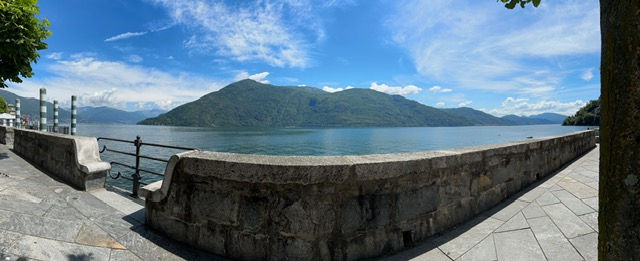
Attrazioni di Cannobio
Con Tara qui un giorno in più, volevamo guidare lungo la riva del lago e ammirare la bellezza del Lago Maggiore mentre guidavamo verso la città di Cannobio e poi attraversavamo il confine svizzero per visitare Locarno. Situato nella provincia del Verbano-Cusio-Ossola, nella regione Piemonte, è un comune molto grande di 51km² a causa del numero di frazioni situate nella zona e poco più di 5000 abitanti.
Si ritiene che Cannobio abbia origini antiche romane sulla base delle sepolture a cremazione rinvenute tra il XVI e il XVII secolo che risalgono al II secolo. Anche una necropoli romana (cimitero) è stata trovata nel secolo scorso. In epoca longobarda si ha notizia che Cannobio ha un castello e un centro fortificato.
Nel Medioevo, lo storico Giovanno Francesco del Sasso Carmine annota nel XVII secolo che Cannobio era prospera dal punto di vista manifatturiero e commerciale nel XIII secolo e nel 1207 aveva il titolo di "Borgo". L'ospedale risale al 1281 e il porto era molto trafficato con le attività commerciali.
Come molte città dell'Italia settentrionale, Cannobio cambiò molte case e nel 1342, con le minacce provenienti dalla famiglia Locarno del nord, Cannobio si sottomise ai Visconti per farne la proprietà. In seguito i Mazzarditi presero il potere e trasformarono il campanile in una prigione per chiunque si opponesse a loro. Nel 1414 Filippo Maria Visconti sconfisse i Mazzarditi e cedette il territorio alla famiglia Borromeo.
Nel corso dei secoli ci fu un legame storico con Milano e infine con l'Austria e nel 1748 i Savoia presero il territorio dagli austriaci. Tuttavia, poi Cannobio e altri comuni passarono dall'arcidiocesi di Milano alla diocesi di Novara nel 1817 e continuarono a mantenere il rito ambrosiano, rito liturgico adottato dalla Chiesa latina nella maggior parte dell'arcidiocesi di Milano. Questo è distinto dal rito romano comunemente usato e ha causato attriti con alcuni vescovi. Tuttavia, il Vescovo di Novara si rese conto che la popolazione di Cannobio non voleva cambiare il rito e durante una visita a Cannobio cambiò idea e lo lasciò al rito ambrosiano.
Durante le guerre d'indipendenza tra il 1818 e il 1860, Cannobio fece parte del Piemonte sabaudo e i cannobiosi difesero con orgoglio il centro di confine contro l'attacco austriaco e furono respinti nella notte tra il 27 e il 28 maggio 1859.
Alla fine del XVIII secolo la città aveva fabbriche di seta, concerie, cartiere, ma tutte sono ora scomparse. Come molti paesi in Italia, i piccoli centri hanno inviato molti uomini in prima linea durante entrambe le guerre mondiali e molti non sono mai tornati a casa. E' stato creato un Parco della Memoria per i caduti delle due guerre.
Dopo l'ultima guerra c'erano molte persone che immigravano dall'Italia meridionale, dalla Sardegna e dal Veneto a causa della sua vicinanza alla Svizzera che aveva molti più posti di lavoro. Oggi, l'economia è vivace in estate con turisti provenienti da Svizzera, Germania, Francia e Paesi Bassi.
Le frazioni che compongono Cannobio sono Camelglio, Carmine Inferiore, Carmine Superiore, Cinzago, Ronco, San Bartolomeo Valmara, Sant'Agata sopra Cannobio, Socraggio, Socragno, Traffiume. Ognuno ha il suo carattere, che si tratti di una chiesa apposita, dei balconi panoramici, del campanile, dell'oratorio, del confine di stato, del primo insediamento o di un torrente che separa il paese. Potresti facilmente trascorrere qualche giorno esplorando questa straordinaria zona.




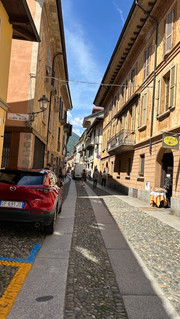







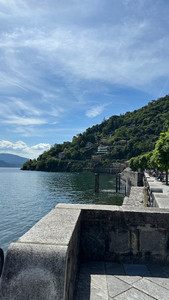





























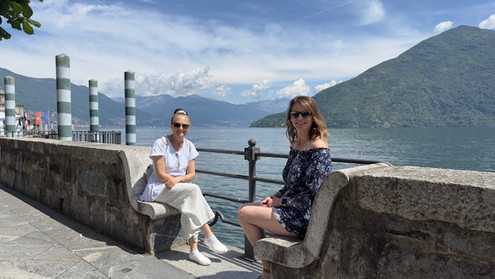



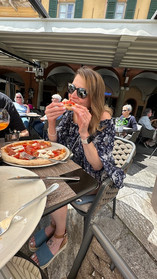







Comments